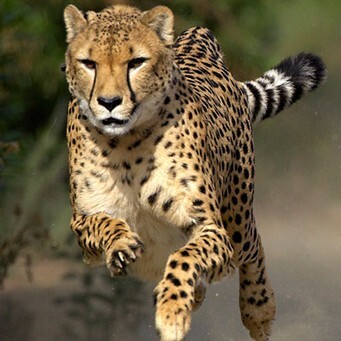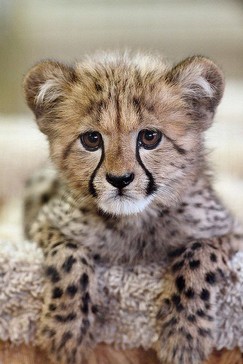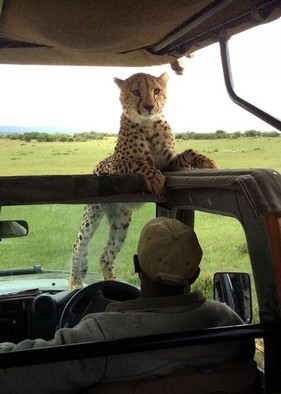- Cheetahs to return to India 70 years after being hunted to extinction.
Published by -NAWA News Feed- in -Wildlife News- · Sunday 19 Sep 2021
More than seven decades after maharajas and British colonial hunters wiped cheetahs from the Indian landscape, the world’s fastest land animal will sprint back into the country under new conservation plans.

More than a dozen African cheetahs will be moved from South Africa and Namibia to Kuno National Park in central Madhya Pradesh state under an ambitious project to reintroduce the extinct animal in India.
New Delhi has for years been trying to bring the animal to the country while facing reluctance by host nations and a court ban over concerns that the African cheetahs were not fit for life in India. But last year the Supreme Court reversed its ban and allowed the relocation on an experimental basis. “In the first phase, 12 to 15 cheetahs are likely to arrive later this year or early 2022,” Gaurav Khare, spokesman for India’s Environment Ministry, told The National.
“Over the next four to five years, 40 to 50 are expected,” he said. The African wild cat’s new habitat is a vast grassland of more than 340 square kilometres, with large open spaces that will allow the animals to show off their speed – they are capable of reaching 120 kilometres per hour.
The guest cats will share their habitat with about 200 Indian leopards and hunt blackbucks and Indian deer. Asiatic and African cheetahs differ slightly from each other in size and build, but both are impressive athletic animals with sleek frame, long legs, unique teardrop marks and tiny black spots.
Cheetahs globally face extinction pressure from climate change, hunting and low rates of reproduction and are classified as vulnerable under the International Union for Conservation of Nature's red list of threatened species.

About 7,000 cheetahs remain in the wild in South Africa, Namibia, Botswana and Iran. It is believed India had more than 10,000 cheetahs during the reign of 16th-century Mughal emperor Akbar, with about 10 per cent as hunting stock for the court. But their population dwindled swiftly by the 1900s because of bounty hunting by British colonisers and local rulers.
The last three cats were hunted down in 1948 by Maharaja Ramanuj Pratap Singh Deo, a king in central India’s Koriya region in 1948. In 1952, the Indian government declared cheetahs extinct in the country.
The species faced a similar fate throughout Pakistan, Afghanistan and Iraq, with only about 50 Asiatic cheetahs surviving in Iran, according to the International Union for Conservation in Nature.


Since the 1970s India made several attempts to reintroduce the Asiatic cheetah from Iran, but Tehran turned down the request because of their own dwindling population of the beasts. New Delhi then set its eyes on African cats, but the top court banned any relocation in 2012 because the species is foreign to India.

But last January it agreed to the proposal, praising India’s credentials in the conservation of other big cats, including Asiatic lions and tigers.
India’s tiger population has doubled to nearly 3,000 since 2006, when rampant poaching and shrinking habitat had led to a huge decline in numbers.
Asiatic lions have almost doubled since 2005 to about 675 from 359 in 2005.
About 14,000 leopards live in the wild, making India’s conservation a huge success and prompting authorities to push for the import of cheetahs.
But their reintroduction divided the country's wildlife experts, with some saying the endeavour is romantic. Cheetahs in Africa often enter farmland to prey on livestock, and experts fear that the cats will be under greater threat in India, largely because of a lack of awareness among local communities about its behaviour.
“Bringing any animal sounds romantic but people have not seen cheetahs in decades,” Dr Rajesh Gopal, secretary general of Global Tiger Forum said.
“Cheetah is a delicate animal, more dog-like. They need open space to run and hunt their prey … they may end up in human settlements and earn a pest value," he said. Dr Gopal said that it was likely that humans may harm the cheetahs in self-defence and the government needs to sensitise and train the local communities to tackle such a situation.
Man-animal conflicts have increased in recent years owing to human encroachments and shortage of food in the wild that forces the animals to search for food in nearby human settlements. On average more than 200 people are killed by big cats every year and more than double the number of animals, mostly tigers and leopards, are killed by people in India.

Despite these figures, residents near the park say they are not worried about conflict with cheetahs because they have been living in harmony with wildlife for ages.
Locals say that cheetahs will help to boost the region's economy because the animals will attract tourists. “I have lived my life surrounded by animals, and have even seen leopards at times. We are not scared,” Pramod Ojha, 34, a shopkeeper near the park, told The National.
“We are excited about cheetahs because tourism will increase and help our business,” he said. Read more from "The National".



